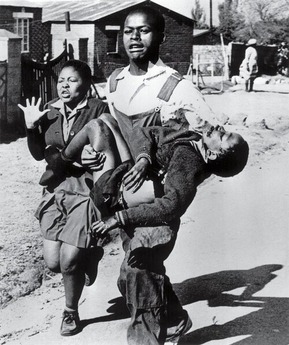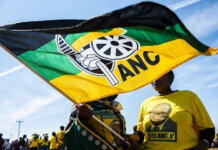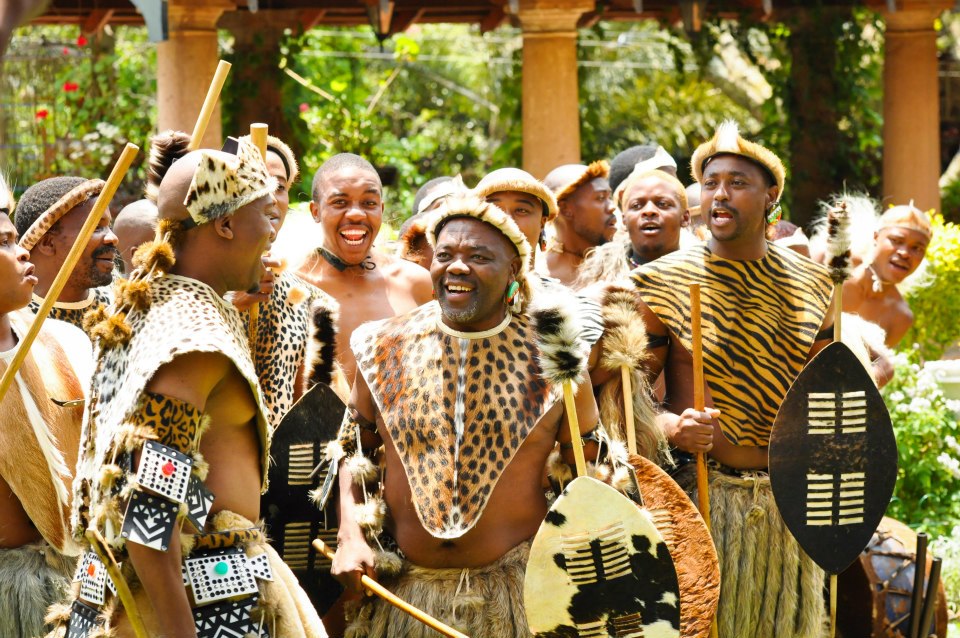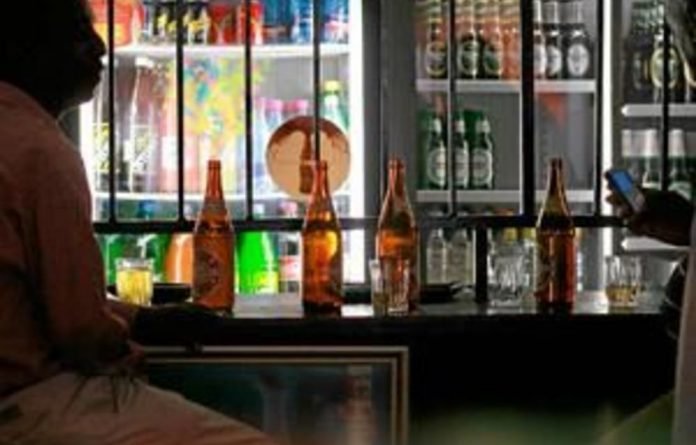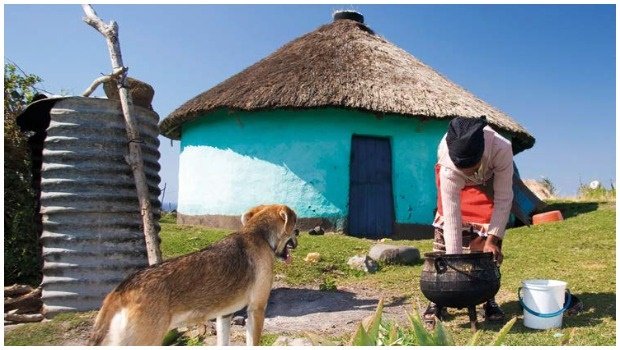This Content Is Only For Subscribers
I was a mere 2 years old when the countries “black” students in Soweto decided that they no longer are going to accept the dictation of having half of their subjects taught in Afrikaans. With the claim that the sciences, math and geography could not be taught in Afrikaans for maximum comprehension to students whose home or communication language was not Afrikaans. To the students at that time, it further communicated that this was another ploy by an apartheid government to keep control, making these students unemployable, without the necessary points to enter university irrespective of how intelligent these students really were. Simply put the phrase “setting them up to fail” was very much the school of thought. With a result, after a few efforts of getting the attention of the powers that be by bunking and boycotting classes, the students on June 16 took to the streets. The uprising that began in Soweto, spread countrywide, and profoundly changing the socio-political landscape in South Africa.
On this fatal day in 1976 the youth of our country were met with aggression and violence from the police force who responded in a hail of live ammunition and teargas. Today our memory of this uprising is the iconic picture of Hector Peterson lying in the arms of a fellow student as he was dying. At the age of 12 Hector Peterson life was lost to the uprising of the students of 1976, yet today graces the walls of fame bringing about change, transformation and an end to dictatorship and tyranny. Movies like Sarafina and stage plays have tried to bring this sad reality over the years to our minds and hearts. However, nothing has touched our hearts and minds more than that black and white photo which has graced media the world over.
16 June 1976 was a major turning point in South African history. The protests by Soweto school children on that day marked the beginning of the end of frighten, submission on the part of the black population of South Africa and the beginning of a new militancy in the struggle against apartheid. South Africa would and has not never been the same again. On this day thousands of youths were ambushed, and countless lives lost that causes us today to look deeply into what has changed. This uprising was the catalyst to what we have today, lives lived in a post-apartheid era. An end to segregation. An end to group areas act. An end to exclusion to schools, institutions of higher learning and access to right to all our constitution promises to all.
Today as I look back and think about the condition of that unimaginable challenged faced by the youth, our people of that time. The traps of movement, the fear of speaking, the disarmed reality of no security or safety. The hours of worrying whether your children, your husbands, wives, would return safety from work, school or simply a trip to secure food for the household. And still in all those painful, heart retching thoughts of the past, nothing compared to the goose bumps and tears seeing our first black president Nelson R Madiba inaugurated into the highest office of the land. The absolute excitement in every home as the flag of black, white, blue, red, yellow, green was raised symbolising a united nation. A nation hopeful to achieve whatever dream you could dream irrespective of colour, class, culture, gender or religion. We were so hopeful. The world was watching. The world celebrated with us. South Africa was hailed and praised across the globe for forging a way forward together that resulted in a peaceful and united change of government, welcoming in an age of democracy. Our very own Madiba, a man for all time, a man of all seasons, a man that reached every heart, a symbol of equality, unity, fairness, growth and prosperity for all South Africans. Great or Small. Short or Tall. Rich or Poor. Black or White. We a nation were going to forge through and heal our land, bring about economic change, favour and faith in our economy on the world market. Access to basic human rights and a promise of a new tomorrow. The rights of all for all to life and sustainable, equal opportunity living.
What exploded 51 years ago, became a reality 29 years ago, bringing us to today on the eve of celebrating and commemorating Youth Day and what does that look like. Unfortunately, not much has changed. The notion of us being a country where everyone has a fair chance to succeed is almost non-existent in South Africa. Equal education is a myth, a fantasy and wishful thinking of the Mandela era.
Today what we still have is overcrowding in schools, poor quality of education, lack of opportunity brought on by still a huge margin of inequality and poverty.
In 2020 Amnesty International published its report, South Africa – Broken and unequal education perpetuating poverty and inequality, and noted that “the South African education system, characterised by crumbling infrastructure, overcrowded classrooms and relatively poor educational outcomes, is perpetuating inequality and as a result failing too many of its children, with the poor hardest hit.”
What has changed now that we are in 2023. Are we still in the same sinking boat. Yes, we are, and while this is much all my opinion and not that of a well-educated academic, economist, or ill placed politician. While I am by no means a politician, or a privileged wealthy successful parent that is, I am a mother. A mother that looks on the image of a black and white photo taken on a fatal morning in 1976 and mourn the loss of all the lives, for a changed system, a changed South Africa. Any person with a brain can sees that we are a country in crisis. The condition of our schools, the infrastructure and sanitation, the hunger and lack of basic rights of every child, youth crammed into our schools, screams the cries of 1976. While there has been improvement of access to schools, those who are wealth, affluent and connected have access to the best schools. The quality of education coveted by the majority of South Africans. The equality pendulum, leaning bending and breaking by the weight of inequality. While many people would read this and say, that I am coloured, and I do not know what I am taking about. We not considered “black” so what have I got to say as my children would have had the opportunity to go to private schools, the previously known model C school or even be afforded a community school built in an affluent community. This is not the case, and we need to get out heads out of the sand and refrain from the continued thinking that South Africa is a country of equal opportunity. Every group has more of its population facing poverty and unable to afford schools that provide the opportunity to achieve everything offered to them by a successful and sustainable future. We still have the problem of pupils going to school with no roof, desks, teachers, stationery, sanitation or and even a structure in which to be taught. Isn’t it any wonder that there is no respect for institutions of higher education when a matriculant that has just achieved the minimum to attend institutions of higher learning, but do not have the means and the life skills to sustain themselves and their learning.
Like most parents I have sacrificed much in my 18 years trying to afford my children the best there is to offer. As a single mom, I failed to maintain this status quo and had to make choices that were detrimental to my sons’ education. Having moved to the South Coast, I had made it my mission to keep my sons in schools that would give them the best education and opportunities. I maintained this for as long as I could. I am still paying off a court order for unpaid school fees and my sons are now 3 years out of school. I could not get my sons into the best formally know model C schools in the area, even though I tried everything morally and ethically possible. I then looked at private schools that are known as homebased schools or cottage schools. This stint was short lived as these schools unfortunately do not offer a balanced opportunity of academics and sports yet are very pricey due to the individual attention the students receive, which for me, I also questioned. Knowing fully well, pupils self-learn in this environment. My panic to find a school for my sons took me to a school within the community. When I think back, my best life was schooling in my community school even though it was under house of representatives and still boarding on a Bantu education system. My research showed that they could not be turned away even if the classes were full as we were in the area. I was loathed to do this to them, from what I knew about the school. However, here I was sitting in the principal’s office, with the flag strategically placed, photos of our government leaders on display, a false security that my sons will get the best this country has to offer. So, with a promise that I will attend a meeting for nominations onto the SGB. I got nominated onto the SGB even though I barely picked up the jist of the formal meeting conducted in Zulu.
I agreed out of principle, as I was determined to be the change and fight for teachers, stationery, school sports and well, at least to fix the desks and the broken windows and to get proper sanitation. I was going to be the change I wanted to see. The first school report came with 3 subjects having 0. I was devasted and aghast at the blatant disrespect of my sons to think this was an acceptable performance at school and to their academic career. This followed by knowledge of a sad reality that the students were sharing torn textbooks, that most of the class had no teacher or lack of teaching. Attending my first SGB meeting fired up with the wrath of an angry single, tired, drained of life mother, simply to hear about posts frozen, funds not available and well a political element that blocked access to funds because the school was not in a priority area and not in a winning party sectioned school.
Then came the violence during classes, desk flying and pupils scampering for cover almost every week without fail. Then the racial segregation and started that met my sons daily with them been chased out of the school by pupils armed with guns, knives and baseball bats. For one week, all coloured children came to my home to do lessons and keep up to date with their schoolwork. When they did go back, they had to be accompanied into the school and the same for exiting the school. This had to change and so I embarked on home-schooling them on my own. And before Covid hit, we were already in a steady hum on normalcy. This though was and not ideal. We continue to use words of black and white, coloured and Indian and that been the bases of opportunities for schooling, access to universities, employment, business with government and tendering points.
So, what has this got to do with June 16 commemoration article you may say. Well, it has everything to do with it. 29 years into democracy and there is still very much a spirit of inequality across race groups, across social status, across communities and across our country. Our politics is volatile and has made for a very unstable economy. The statistics are alarming of what the youth face today. Unemployment rates are at their highest. The access to clean water, electricity, housing, infrastructure and quality of life still evading most people.
According to stats SA: South Africa’s youth continues to bear the burden of unemployment. Youth in South Africa continue to be disadvantaged in the labour market with an unemployment rate higher than the national average. According to the Quarterly Labour Force Survey (QLFS) for the first quarter of 2022, the unemployment rate was 63,9% for those aged 15-24 and 42,1% for those aged 25-34 years, while the current official national rate stands at 34,5%. South Africa has over 10 million young people aged 15-24 years and, of these, only 2,5 million were in the labour force, either employed or unemployed. The largest share (7,7 million or 75,1 %) of this group of young people are those that are out of the labour force (i.e., inactive). The main reason for being inactive is discouragement, i.e., they have lost hope of finding a job that suits their skills or in the area they reside.
Life has become unbearable for most and the quality of our education still cannot hold up to that of the rest of the world. Schools are still a political hot bed, violence is still the order of the day, pupils still sit in school unable to be taught in their home language or a language they understand in both oral and written speech. Every year without fail, our universities burn due to protests and strikes brought on by the weight and cost of access to “proper” education in our country. The workplace has been drained of it trades people and blue-collar workers, which largely comes from middle income groups who now are fleeing the country as their income is worthless in the failing economy. Students who are intelligent and capable enough to be nurtured, taught, developed in areas of Science, Technology, Engineering and Maths (STEM) do not have access to teachers, infrastructure and means to succeed in this area. You cannot teach a student technology when they do not have access to computer labs at school. You cannot teach a student science when they do not have access to science labs at school. You cannot teach a student engineering and maths when they have never even held a T-bar or protractor in their hands.
This is not just a “race” problem it is a problem for our entire country. Human Intelligence has its place in every society and still will continue to trump with the age of Artificial Intelligence knocking at our doors. You can teach a child coding and robotics; however, we also need to mention here the value of life skills and workplace readiness to go hand in hand with everything else. School leavers and graduates do not have the necessary skills to enter the job market and become gainfully employed. While we have degree and master graduates also sitting at home due to a falling economy. We may encourage youth to start businesses and find a way to be self-sustainability. In my opinion no amount of changing policy to encourage this will help. Such as making youth the ages between 15 and 35. This does not help a bit if there is no business to be made or had. If there is no one that can afford to pay for what you have to offer, supply or fill a need due to increase costs of everything around them, there will be no business. Every business relies on customers and if our economy is making it that households do not have a disposable income and the private sector battling to maintain and make profits, there will be no business. So, we cannot sing this song anymore as an answer to our problems. It’s enough that adults are considered youth when they already in their 30s with homes, families and responsibilities, but that is a rant for another day.
There is a place for everyone, and everyone should have access to every opportunity. Youth Day will continue to trickle down to an entertainment event bringing youth together, however on Monday, our youth will still go back to the stark reality of our society, economy and political climate of this country of inequality of the haves and have nots. Access and none. A dismal future outlook and dreams of leaving our shores for better opportunities. As to why our government, parliamentarians and politicians do not understand this simple reality — your guess is as good as mine. What is sad, and should be a concern to all South Africans, is that educational inequality by socioeconomic background will persist at current levels throughout the next generation, if change does not happen and happen fast.

